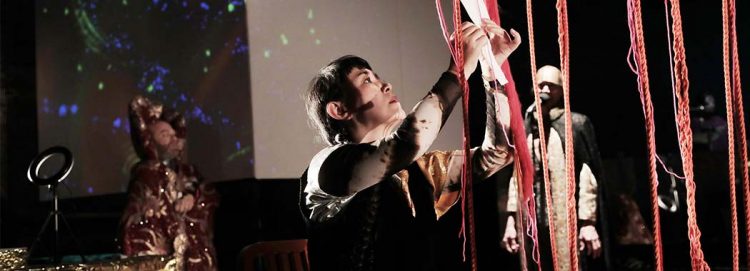By Gregory Moomjy
In the 19th century, composers like Liszt and Wagner gave music a special directive. They decreed it should forever move towards greater power of expression. This philosophy has led to the creation of everything from operas like Tristan und Isolde and Erwartung, to the serial compositions of Pierre Boulez and Milton Babbitt. Naturally, when “the music of the future” became the driving force behind contemporary pieces, a countercultural movement sprang into being.
Headed by John Cage, Chance music sought to do away with the complex compositional theory behind atonality and Serialism. His evergreen piano piece “4’33″” in which the performer sits in silence as the audience concentrates on the music occurring around them, takes the composer entirely out of the question.
Cage’s followers soon invented “happenings”. These performances questioned not only how we consume live music, but the culture of concert going as well. One event started when a butterfly was let out of a jar, and ended when the butterfly left the room. On another evening, performers attacked the audience with razor blades, slashing at tuxedos and other staples of elegant theater attire.
You Are Under Our Space Control, an opera with music by Travis Just and a libretto by Kara Feely, certainly feels like a happening. If not a happening, then a deconstructed opera. In other words, a show with all of the elements of an opera are present: a large cast, fancy, occasionally weird costumes, such as a poodle in coronation robes, and plenty of stage activity are present, but they exist on their own to be experienced separately. In contrast to opera in its more traditional form where all of its parts combine to create a Gesamtkunstwerk.
According to press materials, the opera tells the tale of “an earth that has been depleted of all natural resources needed to sustain life.” The characters are preparing to jump into “the great, empty, unknown space. Upon crossing this threshold, they enter into a socialist universe of bizarre aesthetics, neurotic impulse and upended notions of time-body-self.”
These are lofty goals, but this is not the first work of musical theater to take on contemporary issues. In a perfect world, this opera is agitprop theater, such as works like the Cradle will Rock by Mark Blitzstein which centers on the ill treatment of unionized workers at the hands of giant nameless corporations.
So was it effective? Yes, but only intermittently and mostly at the end when ironically every element of the opera was present. Performers, staging, and music came together into something that Wagner would definitely recognize as a Gesamtkunstwerk. Otherwise it just seemed like a really cool experiment in what makes an opera without using the power of the art form to advocate for things like a healthier relationship between humans and the planet we inhabit. Such an experiment would fit perfectly at the Museum of Modern art, or the Brooklyn Academy of Music, which is why producing this at La MaMa Experimental Theatre Club was an extremely good choice.
On stage, five performers were engaged in a wide variety of tasks. These activities ranged from rearranging the words in a piece of text to connecting text to portions of a painting. Honestly there was quite frankly too much going on to keep track of, and the reason for much of the stage business was unclear. For instance, why did one performer dress as a rather regal-looking poodle?
In terms of the music, all of this was accompanied by a “drum-machine transcription of John Cage’s 1951 piano solo and landmark of indeterminacy.” The scoring was most effective in its quiet sections where it allows you to actually hear the text. The performers were called upon to execute a variety of vocal techniques from spoken monologues to pitch changing vocals in which they sounded like they sucked helium out of a balloon. The text is inspired by “Sun Ra’s Afrofuturist poetry, the Russian Cosmists’ poetics and philosophies, and interviews from astronauts, both real and imagined.”
Unfortunately, the libretto easily got lost for much of the piece. It was only during the quieter sections of the score, where the performers spoke the text without any adjustments to their voices, no matter how cool they were to hear, that the poignancy of the piece got through. Otherwise simply put, too much happened all at once, consequently the opera lost its power.
For most of the performance, I couldn’t help but think of David T. Little’s Dog Days, which ends with a “sound sculpture.” However, the difference between Dog Days and You Are Under our Space Control is that Little’s sound sculpture is purely instrumental and doesn’t require any text to be heard over the music.
This is why the end was effective. As one of the performers intoned the final monologue, the music got progressively louder as his voice faded progressively to a whisper. Suddenly a fog machine started up and the opera concluded as performers and stage became shrouded in fog, and the orchestra played its final crashing measures.
Seeing this on stage was very moving. The fog, which perhaps, symbolized air pollution really sublimated the ending and served as an apt warning of where we’re headed, if things don’t change. That said, such a moving finale was only possible because all of the disparate elements of this production worked together and showed opera at its best. And that’s why You Are Under our Space Control is worthwhile. The rest of it is a worthy experiment, something nice to see but not necessary something that will move you.

